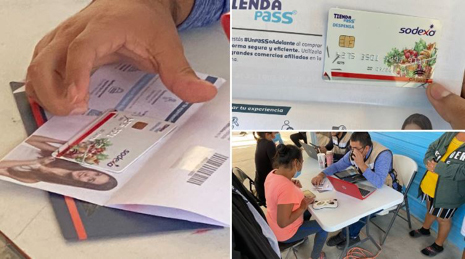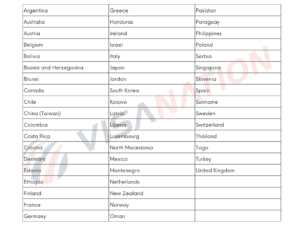Biden’s Border Desperation Breeds Confusion for Migrants — and Americans
As Title 42 is set to end on May 11, pundits like me are scrambling to understand what our desperate and farcically unprepared administration is planning to do when wave after growing wave of migrants start crossing the Southwest border in coming days. The Wall Street Journal reports the migrants don’t know that either — but it’s not stopping them from coming. That uncertainty is a problem, because the migrants and American people alike “know nothing about what they’re getting into”.
A Truncated History of Title 42. “Title 42” is shorthand for a series of orders issued by the CDC beginning in late March 2020 to prevent the introduction and spread of Covid-19. Collectively known as “Title 42” because they were issued pursuant to 42 U.S.C. § 265, those orders direct CBP to expel all illegal entrants at the land borders and aliens deemed inadmissible at the land-border ports.
Donald Trump was president when the earliest of those orders were issued, prompting critics of his immigration policies to complain that his CDC only issued those orders as a border-enforcement tool.
That’s a canard, however, because by March 2020, Trump had implemented policies that had created, in the words of Biden’s first Border Patrol chief, Rodney Scott, “what was arguably the most effective border security in” U.S. history, which Biden inherited.
Once Biden took office, Scott explained “control of our borders … disintegrated overnight”, as: “Common sense border security recommendations from experienced career professionals [were] ignored and stymied by inexperienced political employees”.
Those “inexperienced political employees” weren’t alone, as Biden himself played a major role in the rapid disintegration of our border security, quickly reversing nearly all of Trump’s successful border initiatives that had created the security Chief Scott described.
But Title 42 remained, perhaps because it addressed “public health” and not “border security” per se during a period when the Biden administration was attempting to keep a restive American public locked down, or perhaps because the new president relied on other Covid-19-related orders to extend Medicaid benefits and cancel hundreds of billions of dollars in student debt.
Soon, however, Title 42 was on the chopping block.
On April 1, 2022, the Biden administration announced that those CDC orders would be lifted on May 23, 2022. Two days later, the states of Arizona, Louisiana, and Missouri filed suit in federal court, in a case captioned Louisiana v. CDC.
While that case was being considered, on April 26, 2022, DHS Secretary Alejandro Mayorkas rolled out his post-Title 42 border plan. He explained that in preparation for the end of those CDC orders, “DHS operational agencies and partners have planned for multiple scenarios to ensure preparedness and the safe, orderly, and humane processing of individuals consistent with our laws”.
On May 20, 2022, the district court judge in Louisiana, Robert Summerhays, enjoined the termination of Title 42, finding that CDC failed to consider the effect the lifting of Title 42 would have on immigration enforcement and the plaintiff states. The administration appealed that decision but did not seek a stay of Judge Summerhays’ order.
Consequently, Title 42 remained in effect until November 15, when Judge Emmet Sullivan of the U.S. District Court for the District of Columbia issued a decision in Huisha-Huisha v. Mayorkas, a case filed by migrants and advocates to end the public-health orders. Judge Sullivan vacated and enjoined Title 42 in its entirety, effective December 20.
That prompted DHS to issue an “update” on Mayorkas’ April plan to handle an expected post-Title 42 migrant surge on December 13, in which it promised that it would surge resources to the Southwest border and:
impose consequences on those who cross the border unlawfully by optimizing and speeding processing of those subject to Expedited Removal (which allows for the quick removal of those who do not claim fear or otherwise are thought to be eligible for protection), detaining single adults when appropriate, and referring for prosecution those whose conduct warrants it.
What’s “appropriate” and how would expedited removal be applied? No idea, but fortunately DHS received yet another reprieve, this one from the Supreme Court, which first temporarily blocked Judge Sullivan’s order on December 19, and then stayed it until the justices could hear a challenge from the plaintiff states on December 27.
Apparently not trusting Mayorkas or DHS anymore, the White House got involved on January 5, issuing a “fact sheet” inaptly titled “Biden-Harris Administration Announces New Border Enforcement Actions”.
Those “New Border Enforcement Actions” included two novel but utterly boneheaded proposals.
First, it explained, would-be illegal migrants would now be able to access “the CBP One mobile application for scheduling an appointment to present themselves for inspection”. Aliens who failed to schedule appointments, the administration claimed, would be subject, again, to expedited removal.
As I explained at the time, that “CBP One port appointment plan” would quickly crumble under the sheer volume of migrants looking to access it, and sure enough, that’s what has happened.
Second, the administration announced that it would expand the president’s October Venezuelan “parole” plan — which allows nationals of that country to enter the United States for two-year periods with work authorization — to include not only Venezuelans but also nationals of Nicaragua, Haiti, and Cuba, as well — up to 30,000 per month, or 360,000 annually.
That plan is facially illegal, however, and 20 states quickly sued to block its implementation, in a case captioned Texas v. DHS.
In any event, the apparent coup de grace for Title 42 was delivered by the White House Office of Management and Budget on January 30, when it announced the administration planned to extend the Covid-19 national emergency (which had been set to expire on March 1) and the coronavirus public health emergency (then due to end on April 11) to May 11, and end both on that date.
On February 7, DOJ told the Supreme Court that: “Absent other relevant developments, the end of the public health emergency will … terminate the Title 42 orders”. The justices thereafter cancelled a scheduled hearing on the states’ claims about their appeal of Judge Sullivan’s order, but they have yet to dismiss the case. It’s unlikely at this late date that the Court will further continue Title 42.
“Rebuttable Presumption” Against Asylum Eligibility. On January 5, same day the White House issued its fact sheet, DHS and DOJ announced they would be proposing new regulations creating a “rebuttable presumption” that migrants who entered illegally (without going through the CBP One port appointment process) and who had failed to apply for protection on their way to the United States would be ineligible for asylum.
After those proposed regulations were finally published on February 23, my colleague Elizabeth Jacobs explained that they were “so fraught with exceptions and loopholes that the general public should expect few prospective migrants to actually be deterred”.
The Wall Street Journal. Which brings me to a Wall Street Journal article this week captioned “The End of Title 42 Border Policy Puts Migrants in a Quandary”.
The “quandary” in question for those migrants is whether to simply enter illegally or wait for those CBP One port appointments. The Journal explains:
Misinformation about access to the U.S. has spread on social media and through chat groups where migrants exchange information. Many migrants said this week they have little knowledge of the shifting immigration policies. Others fear they could soon lose their chance to get into the country.
Most of the migrants’ confusion, the paper suggests, has to do with the threats to illegal entrants in the January 5 White House announcement and how DHS will interpret those February 23 proposed asylum regulations.
They’re not alone in their confusion. I have been involved in immigration law and policy since 1992, and have little to no idea what the Biden administration actually plans to do once Title 42 ends in a week. And I’m not the only pundit in this boat, because according to the Journal:
Andrew Selee, president of the Migration Policy Institute, a research institute in Washington, said it would be “quite hard” to get asylum in the U.S. without an appointment after May 11, but that much will depend on how U.S. authorities interpret the exceptions.
The administration has had 13 months to prepare for the end of Title 42, time that it has largely wasted. Like the “Keystone Cops”, DHS and the White House seem to be skidding and scrambling in all directions, full of frenetic energy and bluster while confusing “act” with “action”.
“People Here Know Nothing About What They’re Getting Into.” None of the migrants referenced by the Journal have anything close to an asylum claim. One, a Nigerian national named Augustine Ariguzo, was “waiting at a migrant camp in Panama to board a bus to Costa Rica with several U.S.-bound fellow migrants” when he explained that he “planned to seek asylum in the U.S. after struggling to support his family with slim job prospects in Trinidad and Tobago”.
Interestingly, Ariguzo “asserted that he was alarmed by the large number of migrants at camps in the country and … worried that a massive concentration along the U.S.-Mexico border could cause chaos”. He would be a great DHS secretary, because at least he’s “alarmed” by the migrant rush and recognizes the “chaos” likely to ensue at the Southwest border, qualities the incumbent secretary appears to lack.
Ariguzo summed up all the chaos and confusion surrounding the administration’s post-Title 42 “plans” aptly when he complained: “People here know nothing about what they’re getting into.” Little did he know that’s true not only of the migrants, but the American people as well — pundits included.





